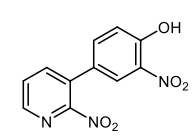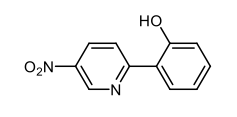This video, we're going to take a look at the directing effects on substituted pyridines. Now similar to 5-membered heterocycles, ortho, meta, and para positions are assigned through the carbon framework. Rule 1 says that the directing effects are the same as electrophilic substitution on benzene rings. And for polysubstituted rings, the most activating group takes precedence. Remember, we have our meta directors here: the nitro group, our positive nitrogen, sulphonic acid, nitrile, and carbonyl.
If you're not one of these groups, then you're an ortho para director and therefore activating in nature. You would have more of a say in where the next group goes over these meta directors. And the rule here is that when it comes to pyridine, the C3 substitution is always preferred. If we take a look here, we have our pyridine with OCH3 attached, and we're trying to do bromination. Now remember, pyridine, because of the heteroatom in the form of nitrogen, is less reactive towards electrophilic aromatic substitution (EAS) reactions.
So, higher temperatures, harsher conditions will be required to do our basic types of EAS reactions. Notice this temperature of 100 degrees Celsius. Here, the OCH3 group, our methoxy group, is an ortho para director. Nitrogen, which is part of our heterocycle, prefers the C3 position. So we're actually going to say C3 is preferred and this is ortho para.
So OCH3 wants it to go ortho or para, but the para position already has nitrogen. And then the nitrogen wants C3, which is this or this. So, we could put a bromine on either one of these. So, I'm going to put it right here. Now the next one, we have a pyridine with a carboxylic acid.
Now we're trying to do nitration here, but notice the temperature is much higher than we had above. Remember, this is an ortho para director. They are activating in nature. They help to spur EAS reactions to happen more readily. This is a meta director.
It's deactivating in nature. So pyridine already has a hard time doing EAS reactions, and I'm slapping on their meta director which makes it even harder for an EAS reaction to occur. So how do I counteract these two negatives? I increase the temperature by a lot. That's why it goes up to 300 degrees Celsius.
Nitrogen again, C3 is preferred. So the carboxylic acid, it wants to meta to itself. So where it's located, we can see it as 1 for itself and then meta to that would be, this position right here. The nitrogen wants the C3 position, which would be right here. So they both would want the NO2 group to go there.
So under nitration, we have the NO2 being attached here. So remember, when it comes to directing effects, we have to take these into account, the activating groups as well as the preference of the heteroatom nitrogen, wanting the C3 position if it can get it, if it's open.








